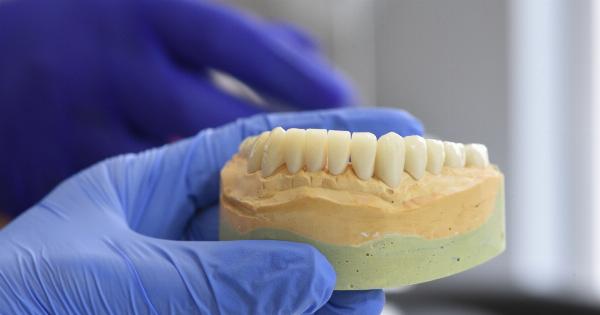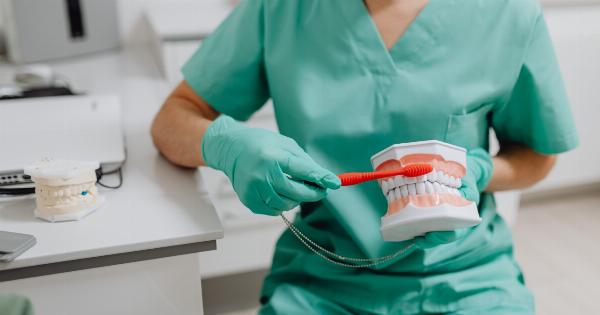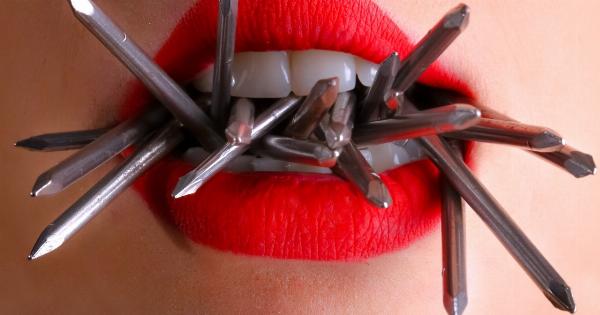Your smile is one of the first things people notice about you. It can make a lasting impression and boost your self-confidence. However, if you have chipped, stained, or misaligned teeth, you may feel self-conscious about your smile.
Luckily, there is a simple and effective solution – tooth bonding.
What is Tooth Bonding?
Tooth bonding, also known as dental bonding, is a cosmetic dental procedure that involves applying a tooth-colored resin material to your teeth. The bonding material is carefully sculpted and shaped to enhance the shape, size, and color of your teeth.
It is a non-invasive treatment option that can address various dental concerns.
How Does Tooth Bonding Work?
The tooth bonding process is relatively quick and straightforward. It typically does not require anesthesia unless the bonding is being used to fill a cavity. Here’s what you can expect during the tooth bonding procedure:.
1. Examination and Preparation
Prior to the bonding procedure, your dentist will examine your teeth and determine if tooth bonding is the right treatment for you. If necessary, they will take X-rays to evaluate the overall health of your teeth and gums.
Next, the dentist will select a shade of resin that matches the color of your natural teeth. They will use a shade guide to ensure that the bonding material blends seamlessly with your existing tooth enamel.
2. Conditioning
Before applying the bonding material, the surface of your teeth will be roughened. This helps the resin adhere properly to the tooth enamel. A conditioning liquid is applied to the tooth, which creates small etches that improve bonding strength.
3. Application
The dentist will apply the resin material to your tooth and mold it into the desired shape. They will carefully sculpt the bonding material to ensure it looks natural and complements your smile.
Multiple layers of resin may be applied to build up the strength and thickness of the bonding.
4. Bonding
Once the resin is in place, a special light or laser is used to harden the material. This bonding process ensures that the material firmly adheres to the tooth surface.
5. Shaping and Polishing
After the resin has hardened, the dentist will shape the bonding material further to refine the appearance and ensure it aligns with your surrounding teeth. Finally, the bonded tooth is polished to give it a smooth finish and a natural shine.
Advantages of Tooth Bonding
There are several advantages to choosing tooth bonding as a cosmetic dental treatment:.
1. Enhances Your Smile
Tooth bonding can dramatically improve the appearance of your teeth, giving you the smile you’ve always wanted.
Whether you have gaps between your teeth, chips, or stains, tooth bonding can address these concerns and give you a more even, attractive smile.
2. Quick and Painless Procedure
Unlike other dental treatments, tooth bonding is a relatively quick and painless procedure. It can often be completed in a single visit to your dentist, depending on the extent of the bonding required.
3. Non-Invasive
Tooth bonding is a non-invasive treatment option that typically does not require the removal of any tooth structure.
Unlike dental crowns or veneers, which require more extensive preparation of the tooth surface, tooth bonding is a conservative approach to cosmetic dentistry.
4. Cost-Effective
Compared to other cosmetic dental treatments, tooth bonding is an affordable option. It provides excellent results at a fraction of the cost of procedures like dental implants or orthodontic treatments.
5. Durable and Long-Lasting
With proper care and maintenance, tooth bonding can last for several years. Avoid biting on hard objects such as pens or ice, and follow good oral hygiene practices to extend the lifespan of your bonding.
Is Tooth Bonding Right for You?
Tooth bonding is suitable for many dental concerns, including:.
1. Repairing Chipped or Cracked Teeth
If you have chipped or cracked teeth, bonding can be a minimally invasive solution. The resin material is applied to the affected area, restoring the appearance and function of your tooth.
2. Filling Cavities
In addition to its cosmetic benefits, tooth bonding can also be used to fill cavities. The resin material is color-matched to your tooth, providing a natural-looking alternative to traditional amalgam fillings.
3. Closing Gaps
If you have gaps between your teeth that make you self-conscious, tooth bonding can help. By applying the resin material strategically, your dentist can close these spaces and give you a more uniform smile.
4. Concealing Stains and Discoloration
Tooth bonding is an effective way to cover up stains and discoloration that do not respond to traditional teeth whitening methods.
The resin material is applied to the tooth surface, masking any imperfections and enhancing the overall appearance of your smile.
5. Reshaping Irregular Teeth
If you have teeth that are misshapen or uneven, tooth bonding can reshape them and create a more harmonious smile. It is a versatile treatment option that can correct various tooth imperfections.
Maintaining Tooth Bonding
To keep your bonded teeth looking their best, it’s important to follow good oral hygiene practices. Brush your teeth twice a day with a fluoride toothpaste, floss daily, and visit your dentist regularly for check-ups and cleanings.
Avoid biting on hard objects or using your teeth as tools, as this can chip or damage the bonding material.
If you notice any sharp edges, sensitivity, or changes in the appearance of your bonded teeth, schedule an appointment with your dentist for a check-up.
The Bottom Line
Tooth bonding is a versatile and effective cosmetic dental treatment that can help revive your smile.
Whether you have chipped, stained, or misaligned teeth, tooth bonding can provide a natural-looking solution that enhances your appearance and boosts your confidence.
If you’re interested in tooth bonding, schedule a consultation with your dentist to discuss your options. They can evaluate your dental concerns, answer any questions you may have, and help you achieve the smile of your dreams.




























